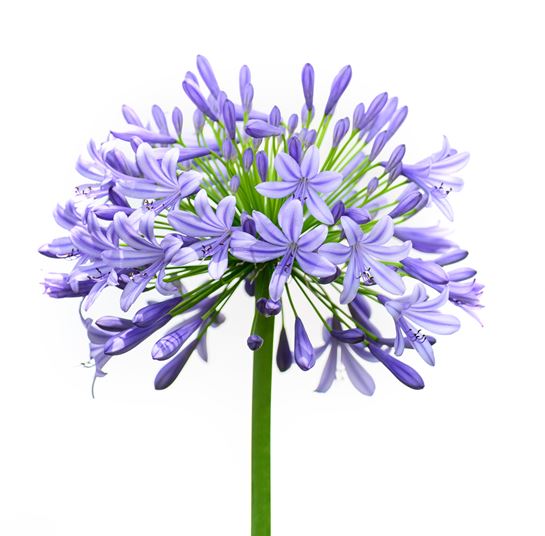Agapanthus Breeding: Tips for Expanding Your Plant Collection
Agapanthus Breeding: Tips for Expanding Your Plant Collection
Blog Article
Mastering the Art of Agapanthus Treatment: Vital Steps for Healthy And Balanced Development and Dynamic Flowers
In the realm of horticulture, the growing of agapanthus stands as a satisfying endeavor for those who look for to support these elegant blooming plants. With their striking blooms and graceful foliage, agapanthus has actually recorded the interest of gardeners worldwide. Nonetheless, attaining optimal development and lively blossoms requires a nuanced method that incorporates different crucial steps. From picking the ideal variety to mastering trimming methods, the trip in the direction of cultivating growing agapanthus plants is multifaceted and holds the vital to unlocking the full capacity of these botanical gems.

Selecting the Right Agapanthus Selection

When selecting the best Agapanthus variety for your garden, consider factors such as environment suitability, blossom shade, and development practice. Agapanthus, typically referred to as Lily of the Nile or African lily, is available in a selection of shades ranging from tones of purple and blue to white. Choose a bloom color that enhances your existing garden combination to create a harmonious landscape. In addition, think about the environment in your region to make sure the Agapanthus variety you choose can thrive in your particular conditions. Some ranges are much more tolerant of cold temperature levels, while others prefer warmer environments. Comprehending the development habit of different Agapanthus selections is essential for correct placement within your yard. Some varieties have a clumping development behavior, suitable for containers or boundaries, while others have a more dispersing nature, ideal for ground cover or mass plantings. By meticulously assessing these aspects, you can pick the best Agapanthus variety to boost the appeal of your garden.
Suitable Growing Conditions
Taking into consideration the optimal environmental needs is crucial for effective Agapanthus growing. Agapanthus plants are sensitive to chilly temperatures and must be secured from frost during wintertime months.
To guarantee healthy and balanced growth and dynamic blooms, plant Agapanthus bulbs at a deepness of concerning 2-4 inches and area them 8-12 inches apart. Adding raw material, such as compost, to the dirt can boost drain and fertility, advertising robust root development. Mulching around the base of the plants helps keep dampness and subdues weed growth. Regular watering is important, specifically throughout the expanding period, to keep the soil continually wet but not waterlogged.
Watering and Feeding Tips
Keeping correct dampness levels and giving necessary nutrients are crucial aspects in the treatment program for Agapanthus plants. When it pertains to sprinkling Agapanthus, it is essential to strike a balance. These plants favor regularly wet dirt however are at risk to root rot if overwatered. During the expanding period, water deeply when a week, ensuring the dirt is well-draining to protect against waterlogging. In hotter climates or throughout durations of dry spell, more constant watering may be required to maintain the dirt uniformly damp. Nonetheless, reduce watering in the winter to stop water logged conditions.
Feeding Agapanthus is crucial for advertising healthy and balanced development and respected blossoms. Use a balanced plant food, such as a 10-10-10 formula, in the early spring as brand-new growth emerges. By adhering to these watering and feeding recommended you read pointers, you can guarantee your Agapanthus plants thrive and create lively, durable flowers.
Pruning Techniques for Agapanthus
Pruning Agapanthus plants at the ideal times and with proper techniques is important for keeping their wellness and advertising optimal growth and flowering. The perfect time to prune Agapanthus is in late wintertime or very early spring before new growth emerges. Start by eliminating any dead or yellowing fallen leaves near the base of the plant. Cut them as short as possible without harming the emerging shoots.
Deadheading spent blossoms can also redirect the plant's power right into generating even more blooms instead than setting seeds. If read more you want to gather seeds for breeding, leave some blossoms to fully grown and completely dry on the plant.
Remember to utilize clean, sharp devices to make specific cuts and lower the danger of presenting diseases. Agapanthus. Normal pruning will certainly aid keep your Agapanthus looking healthy and balanced and cool while ensuring an abundant screen of stunning blossoms
Handling Common Bugs and Illness
After guaranteeing correct trimming techniques for Agapanthus, it is important to address typical parasites and diseases that can impact the health and vitality of these plants. One typical pest that impacts Agapanthus is the Agapanthus gall midget.
Additionally, Agapanthus plants can suffer from root rot if they are planted in improperly draining soil. By being attentive and taking punctual action versus diseases and bugs, you can help your Agapanthus plants prosper and produce vivid blooms. Agapanthus.

Verdict
Finally, grasping the art of agapanthus care includes choosing the ideal selection, providing optimal planting conditions, useful link proper watering and feeding, appropriate pruning methods, and addressing typical pests and illness. By following these vital actions, you can guarantee healthy and balanced growth and dynamic blossoms for your agapanthus plants. Bear in mind to routinely keep track of and keep your plants to advertise their overall health and durability.
To ensure healthy and balanced growth and lively blooms, plant Agapanthus light bulbs at a deepness of concerning 2-4 inches and area them 8-12 inches apart. By complying with these watering and fertilizing tips, you can guarantee your Agapanthus plants thrive and produce vivid, long-lasting blossoms.
One typical insect that influences Agapanthus is the Agapanthus gall midge. In addition, Agapanthus plants can suffer from origin rot if they are grown in badly draining pipes soil. By complying with these crucial actions, you can ensure healthy growth and dynamic blooms for your agapanthus plants.
Report this page